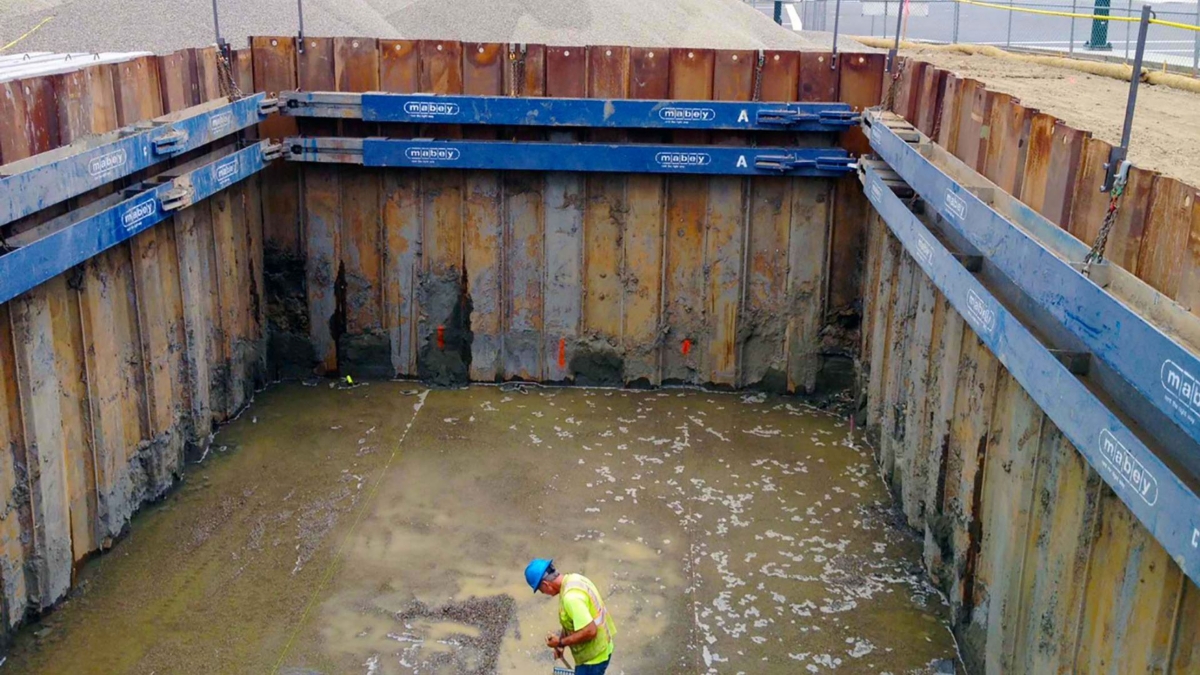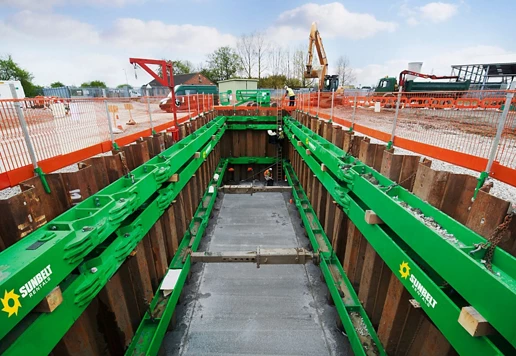Use the Sunbelt Rentals App
Find, rent, and return equipment, right at your fingertips
Trench Safety Tips
By keeping these safety tips at the forefront, you can demonstrate your commitment to creating a secure and responsible workplace for your entire team. Click any of the links below to learn more:
Review OSHA Trench Safety Regulations
In 2018, OSHA prioritized trench safety by implementing a national emphasis program that included revising regulations and updating resources. When OSHA introduces or alters a regulation, it typically establishes a timeline for implementation and outlines enforcement procedures. Employers are often given several months or even years to adapt to the new rule. However, in cases where the change is significant, such as with Trench Safety, immediate and drastic action may be necessary.
When reviewing the OSHA trench regulations, you'll notice that they vary from trench to trench. For example, a trench more than five feet deep and not conducted on stable rock must have a protective system in place. If the trench is 20 feet or more, input from a registered professional engineer is necessary. It's crucial to stay up to date with the latest OSHA trench safety regulations to ensure a safe and compliant worksite. Regularly reviewing the regulations and understanding any recent updates or modifications is critical in ensuring you adhere to the latest safety protocols and procedures. Additionally, educating your team about these regulations is crucial to promoting awareness and preventing accidents or injuries on-site.

Atmospheric Hazards
Working in trenches can be dangerous due to the possibility of hazardous atmospheric conditions, which can cause harm to workers' health and safety. Gases such as methane and carbon dioxide can build up in trenches, leading to a lack of oxygen and the risk of asphyxiation. According to OSHA regulations, employers are required to test the atmosphere in trenches greater than four feet before allowing workers to enter. If hazardous conditions exist or may be expected to develop, employers must ensure that emergency rescue equipment is readily available. This equipment, including breathing apparatus, a safety harness and line, or a basket stretcher, must be attended to when used.
Potential Toxic Gases
Like atmospheric hazards, workers' health and safety are at great risk when toxic gases accumulate in trenches. These gases could come from decomposing materials or chemical leaks, and inhalation could lead to respiratory problems, poisoning, or death. OSHA mandates that employers thoroughly assess the potential sources of these gases to prevent exposure to workers. This assessment should include a comprehensive evaluation of all materials present in the workspace and their potential risks. Gas monitoring equipment should be strictly implemented to detect hazardous gases in the air. These monitors should be placed where workers are most likely to be exposed to toxic gases and regularly checked to ensure correct functionality. Additionally, ventilation systems should be installed to maintain a safe working environment and minimize hazardous gas accumulation. These include exhaust fans, blowers, or other ventilation systems that can quickly and efficiently remove toxic gases.
Debris, Loose Rock, or Water Accumulation
It may seem obvious that when trenches are dug, they often come across debris, loose rocks, and water. These hazards can create an environment susceptible to slips, collapses, and cave-ins. OSHA strongly recommends employing proper support, sloping, or shielding systems to prevent collapses. It's also essential to conduct regular inspections to identify and eliminate any debris, rocks, or water that may compromise the trench's stability. By doing so, you can establish a safe and secure working environment for all workers, reducing the likelihood of accidents and injuries.

Types of Excavation Protective Systems for Trench Safety
Per OSHA guidelines, employers must take measures to prevent workers from cave-ins by:
Sloping and benching the sides of the excavation: Trench walls are formed at an angle, creating a wider and safer pit. This method is more accessible and provides better safety.
Supporting the sides of the excavation: This approach is useful for narrow trenches where there isn't enough space for sloped walls. Hydraulic or air pressure can be used to generate force that prevents collapse.
Placing a shield between the side of the excavation and the work area: Shields, or trench boxes, are placed between the excavation's side and the work area. This protects workers against trench collapses.
Sometimes, the type of protective system required is well-known and easy to use. At other times, employers undertake the process of designing a custom-engineered protective system. While designing the protective system, soil classification, depth of cut, water content of soil, weather, climate, and other operations in the vicinity must be considered. Employers can choose the most practical design that provides the necessary protections. However, any system used must meet the required performance criteria.
Competence Is Confidence with Competent Person Training
As part of their obligation to ensure the safety of their workers, employers appoint a competent person to identify potential hazards and take corrective action to eliminate them. In line with OSHA guidelines, the competent person has the authority to promptly address unsanitary, hazardous, or dangerous working conditions.
Sunbelt Rentals offers in-person OSHA Trench and Excavation Competent Person Training if your project requires a certified representative. Our course provides a comprehensive understanding of the OSHA Subpart P Standard, covering everything from soil classification and protective system inspection to structural ramp design, water removal equipment monitoring, and site inspections. Students who complete the course successfully will receive a wallet-size certificate valid for three years, indicating that they are certified competent persons capable of ensuring worker safety and complying with OSHA regulations.
Call in the Experts at Sunbelt Rentals
Trench safety should never be taken lightly. When in doubt, it's critical to seek expert guidance and support to avoid any catastrophic consequences. The Trench Safety team at Sunbelt Rentals is focused on equipping work crews with effective solutions to keep trench projects compliant and workers safe.
With locations nationwide, we are committed to assisting you throughout your project, offering you state-of-the-art protective systems, site-specific engineered solutions, and industry-leading service.
Trench Safety Resources
Dive deeper into Trench Safety with these related articles, blogs, and success stories.







